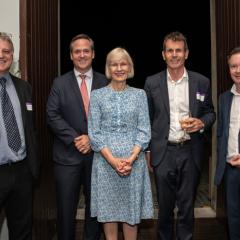A recent CCSG project conducted by a team at the UQ business school investigated the resilience capabilities of 400 small businesses in regional Queensland towns affected by the recent $60 billion plus investment in the coal seam gas to liquefied natural gas to understand key elements contributing to business survival.
These businesses have seen the dramatic rise in economic activity during the construction phase of these projects and then a reversion to more normal levels as the construction was completed. Many businesses were unprepared for the end of the cycle and experienced a bust in business conditions.
The study focused on investigating the concept of organisational resilience, which is defined here as the capacity to respond, adapt and transform in response to changes in the business environment. During the investment period, Ford and co-authors found that having slack resources (spare resources including financial and human) was an important factor increasing the chances of the business thriving in the future. In the next phase of the resource boom cycle, the transition to operations period, key elements for survival were pro-activeness (seeking new product and service niches) and connectedness (close coordination with network partners). Finally in terms of future prospects, the key capability was adapativeness, which is the ability to shift and reconfigure a business to find workable solutions to accommodate external changes and ensuring customer satisfaction.
The study also compared how businesses from different industrial groupings responded to the resource boom. Results showed that retail firms tended to be more resilient, while professional service businesses may struggle with the downturn. Also rural firms located away from town centres may have lower key qualities such as connectedness, adaptiveness and pro-activeness, which may hinder future success.
For more information on this study please see The Conversation article or the final report.



